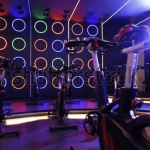Tag: Science
-
Training Talk – Mitochondria
After wandering around my brain a bit at the end of the year, I’m back on the coaching track with this one… I loved every physiology class I took, but I really loved the Exercise Physiology! Dr Seals and Dr Byrnes are the two that come to mind from my University days. Ex Phys and…
-
Intensity Factor and Other Training Metrics

Racing season is taxing! Focused rides chasing ultra specific watts and heart rate values and races where you are taxing yourself time and again in pursuit of results. Frankly, the pursuit of excellence can become monotonous. Thankfully, nature gave us the fall! So what is one to do if the idea of one more watts…
Recent Posts
Recent comments
No comments to show.



